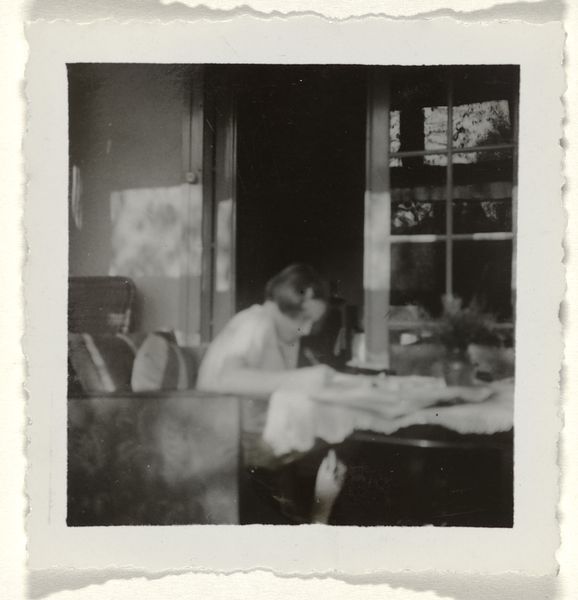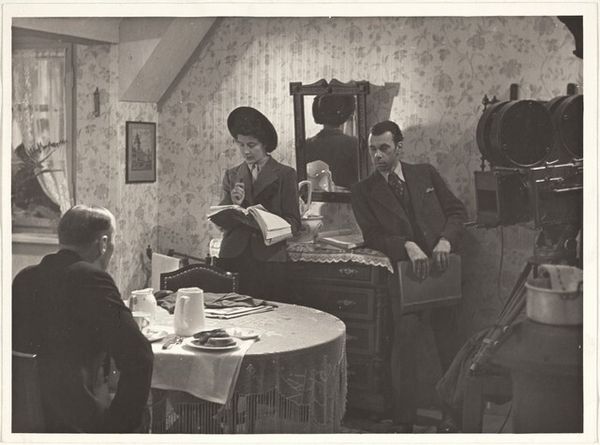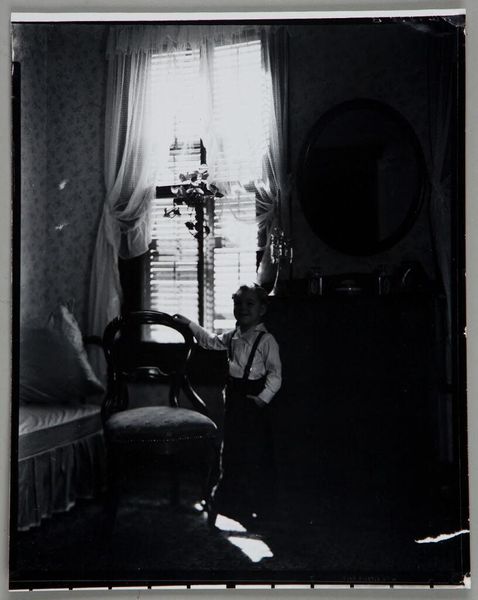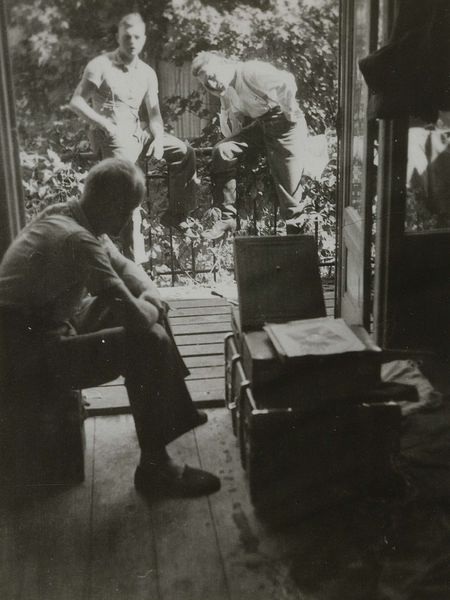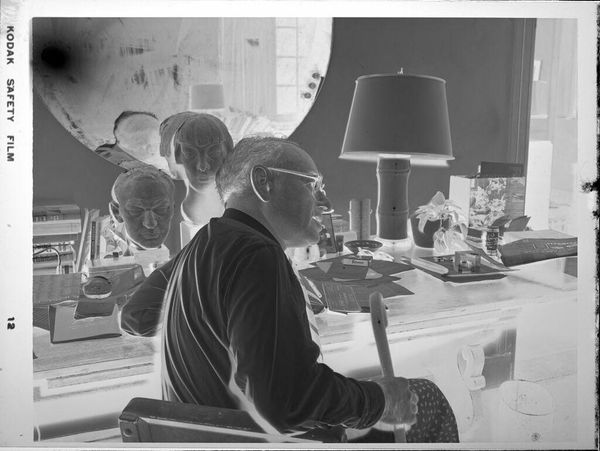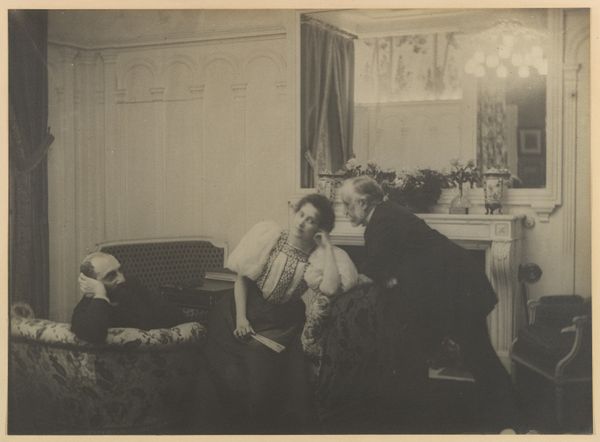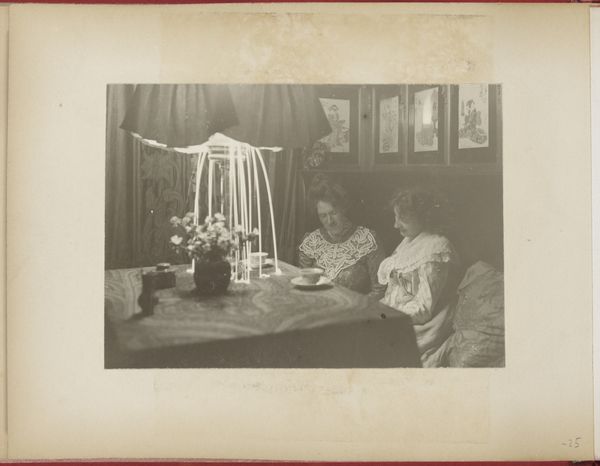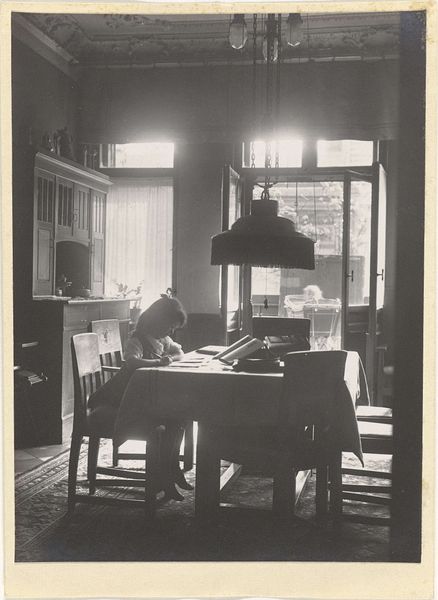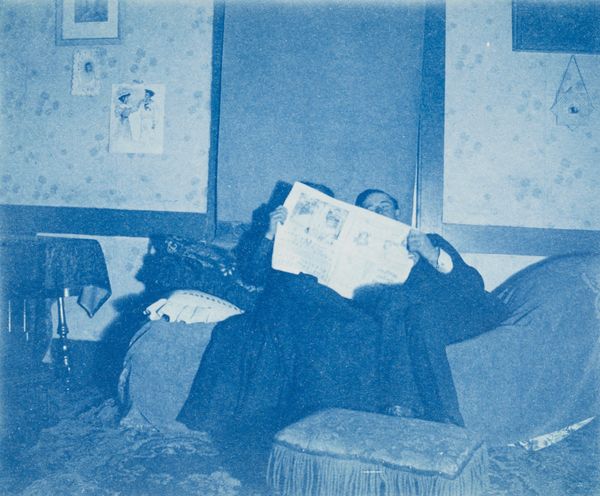
photography
#
portrait
#
soviet-nonconformist-art
#
social-realism
#
photography
#
genre-painting
#
realism
Dimensions: overall: 40.64 × 27.94 cm (16 × 11 in.)
Copyright: National Gallery of Art: CC0 1.0
Editor: Elizaveta Ignatovich’s photograph, "Family of a Kolkhoz Farmer," dating from around the 1930s, depicts what seems to be a family gathered indoors. It feels almost staged, yet strangely intimate. What historical narratives do you see unfolding in this piece? Curator: The photograph’s historical weight is significant. Remember the socio-political context: this was the era of Stalin's collectivization in the Soviet Union. A "Kolkhoz" refers to a collective farm. The photograph operates as propaganda, intended to promote the idea of the idealized Soviet family happily participating in the collective. Editor: So, the "genre-painting" tag refers to these staged moments of normal Soviet life? Curator: Precisely. However, what I find interesting is how Ignatovich subtly subverts the propaganda through realism. The faces are not idealized. There's a weariness, a muted quality that speaks volumes. The lighting, almost chiaroscuro-like, hints at hidden stories behind this supposed idyllic scene. Do you get a sense of that underlying tension? Editor: Definitely. The subdued tones add to that. It's not overtly joyful like you’d expect. Was Ignatovich intentionally resisting the prescribed Soviet narrative? Curator: That's the fascinating ambiguity. Her choices—composition, lighting, even the subjects' expressions—create a complex narrative, prompting viewers to question the official story. Photography at the time had a major public role: the artist becomes an ideological battleground. Editor: I see it now. It's like the photo offers two stories at once: the happy Soviet family and a subtle resistance of it, at least as perceived. It definitely prompts deeper thought about Soviet-era imagery. Curator: Exactly. Analyzing such works reveals much about the artist, the era, and the complicated relationship between art and ideology. I’ve also learned to never underestimate the subtle ways artists embed social and political critique within their work.
Comments
No comments
Be the first to comment and join the conversation on the ultimate creative platform.
